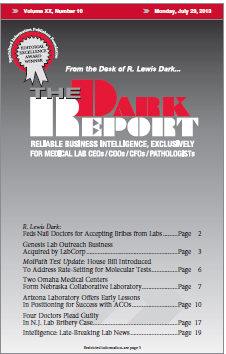CEO SUMMARY: An accountable care organization with a strong clinical laboratory component is taking shape in Nebraska. The University of Nebraska Medical Center has developed a partnership with the Nebraska Methodist Health System to form an ACO called the Accountable Care Alliance. It will serve Nebraska and perhaps other parts of the Midwest. Both the …
Two Omaha Med Centers Form Collaborative Lab Read More »
To access this post, you must purchase The Dark Report.


